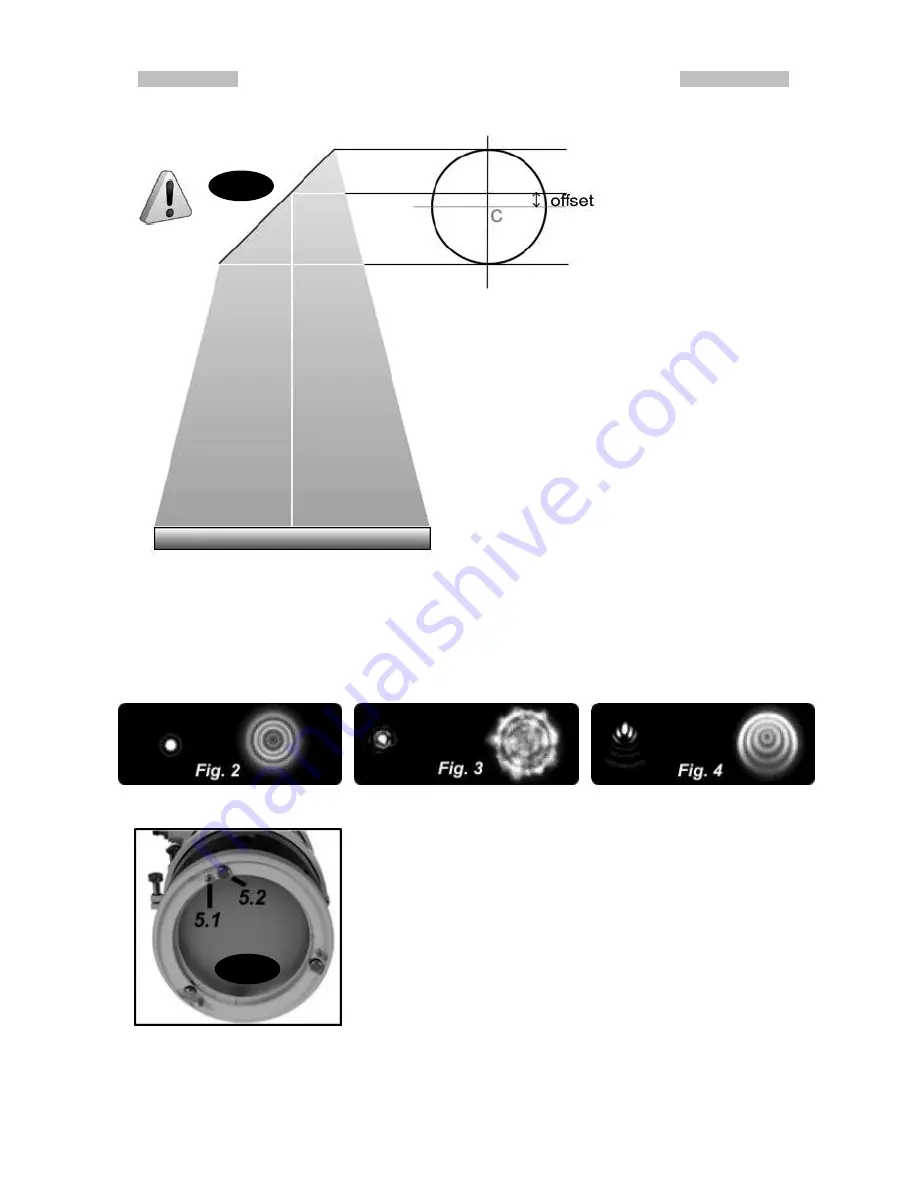
Part IV: Advanced Operations
8
Part IV: Advanced Operations
Offset and collimation
The secondary mirror of the Quatto 200 is
already positioned “full offset”.
In a fast Newtonian like the Quattro, the center of
the secondary mirror doesn’t correspond to the
axis of the cone of light reflected by the primary
mirror. To intercept the light cone properly, the
secondary mirror has to be positioned “offset”
from its center, as shown in
[
Fig. 1
]
.
The offset of the spider vanes with the center
of the secondary mirror will be visible when
looking into the telescope by the focuser's
side. This is normal and should be taken in
account when doing a collimation.
Mirrors inside the telescope have been carefully aligned to each other in the factory. When
using the telescope, this alignment should be checked to ensure optimal image quality.
When looking at a bright star, the star image given by your telescope should be symmetrical,
a central dot with diffraction rings centered on this white dot (see
Fig 2
). Be patient to
consider the average shape of the star image while the image is slowly moving due to air
turbulence (see
Fig 3
).
If the star image appears to be unsymmetrical (see
Fig 4
) a
recollimation is needed. Therefore, the blocking screws of
the primary mirror on the back of the telescope should be
loosened
[
Fig. 5.1
]
and the big adjustment knobs will then
allow realigning
the primary mirror to obtain a symmetric star
image again
[
Fig. 5.2
]
. These adjustments should be small.
After adjusting, by tightening the blocking screws, you can
lock the primary mirror in its aligned position.
When misalignment is heavy, an alignment of the secondary
mirror should be done also. In that case, it is recommended
to use an optional laser collimator. This laser collimator
greatly helps in determining the misalignment of each mirror.
Fig. 1
Fig. 5













